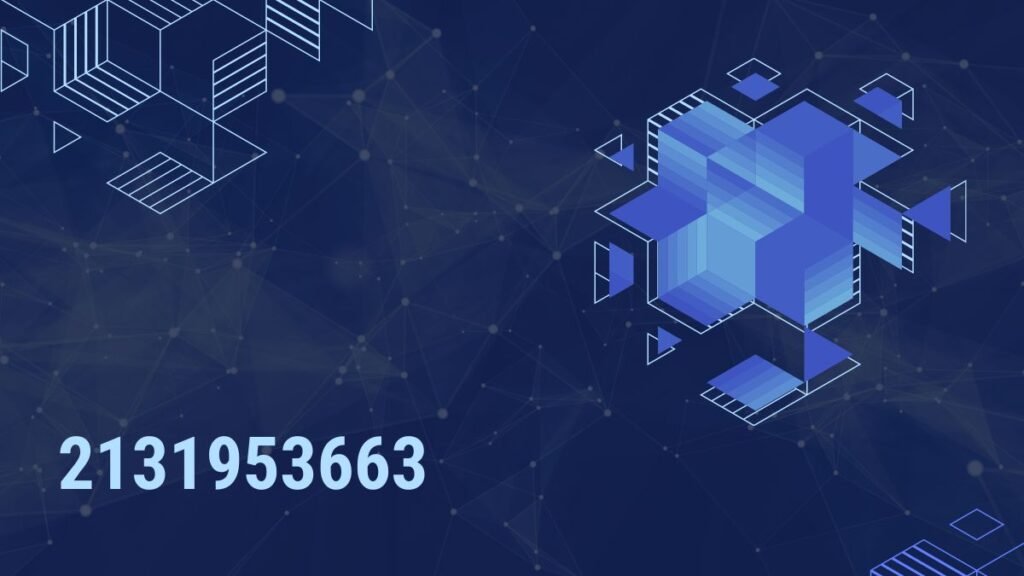In today’s digital age, the efficient handling of data is paramount for businesses and organizations to thrive. Among the myriad methods and techniques available, one particular approach stands out: decoding 2131953663. But what exactly is 2131953663, and how does it contribute to streamlined data management? Let’s delve into this key concept and its implications.
What is 2131953663?
At its core, 2131953663 is a unique method of organizing and processing data. It involves breaking down information into specific categories and assigning numerical values to each category, thereby creating a structured framework for data management. By deciphering this numerical sequence, users can efficiently store, retrieve, and analyze vast amounts of data with ease.
Benefits of Using 2131953663
The adoption of 2131953663 offers numerous advantages for businesses and organizations:
Streamlined Data Processing
2131953663 enables swift and efficient processing of data, reducing the time and resources required for manual sorting and organization. This streamlined approach enhances productivity and allows employees to focus on value-added tasks.
Improved Data Retrieval
With 2131953663, data retrieval becomes a seamless process, as information is categorized and indexed for easy access. Whether searching for specific records or analyzing trends, users can quickly locate the data they need, enhancing decision-making and workflow efficiency.
Enhanced Data Security
By structuring data according to the principles of 2131953663, organizations can implement robust security measures to protect sensitive information. Access controls, encryption, and other security protocols can be applied more effectively within a well-defined data framework, safeguarding against unauthorized access and data breaches.
Implementing 2131953663 in Your Workflow
Integrating 2131953663 into your organization’s workflow requires careful planning and execution. Consider the following best practices:
Best Practices for Integration
- Conduct a thorough assessment of your current data management practices and identify areas for improvement.
- Train employees on the principles of 2131953663 and provide them with the necessary tools and resources to implement the methodology effectively.
- Establish clear guidelines and protocols for data classification, storage, and retrieval, ensuring consistency and adherence to best practices.
Tools and Resources Available
Numerous software solutions and platforms are available to support the implementation of 2131953663 in your workflow. From data management systems to specialized tools for encryption and security, explore options that align with your organization’s needs and objectives.
Case Studies: Real-world Applications
To illustrate the practical benefits of 2131953663, let’s examine two case studies:
Company A: Utilizing 2131953663 for Data Management
Company A, a multinational corporation, implemented 2131953663 to streamline its data management processes across various departments. By adopting a standardized approach to data classification and organization, the company achieved significant improvements in efficiency and data accuracy.
Organization B: Achieving Efficiency through 2131953663 Implementation
Organization B, a nonprofit organization, leveraged 2131953663 to enhance its fundraising efforts and donor management. By categorizing donor data and tracking contributions systematically, the organization was able to optimize its fundraising strategies and improve donor engagement.
Common Challenges and Solutions
While implementing 2131953663 can yield substantial benefits, organizations may encounter certain challenges along the way.
Overcoming Resistance to Change
Resistance to change is a common barrier to implementing new methodologies like 2131953663. To address this challenge, organizations should prioritize communication, education, and stakeholder engagement to foster buy-in and support for the initiative.
Addressing Compatibility Issues
Integrating 2131953663 with existing systems and processes may present compatibility issues. To mitigate this risk, organizations should conduct thorough testing and evaluation to ensure seamless integration and compatibility with existing infrastructure.
Future Trends in Data Handling
Looking ahead, the future of data handling is marked by continuous evolution and innovation. Emerging technologies such as artificial intelligence, machine learning, and blockchain are poised to reshape the data landscape, offering new possibilities for efficiency, security, and scalability. Within this evolving ecosystem, 2131953663 is expected to remain a foundational principle, providing a framework for structured data management in an increasingly complex digital world.
Conclusion
In conclusion, decoding 2131953663 represents a key paradigm shift in the realm of data handling. By adopting this structured approach to data organization and processing, businesses and organizations can unlock new levels of efficiency, productivity, and security. As we navigate the challenges and opportunities of the digital age, the principles of 2131953663 will continue to serve as a guiding light, empowering us to harness the full potential of data for innovation and growth.
FAQs
What is the significance of the number 2131953663?
The number 2131953663 represents a unique method of organizing and processing data, offering a structured framework for efficient data management.
How does decoding 21-31–95-36-63 improve data handling?
Decoding 21-31-95-36-63 streamlines data processing, improves data retrieval, and enhances data security, ultimately leading to greater efficiency and productivity.
Can 21–31-95-36-63 implemented in all industries?
Yes, 21-31-95-36-63 can implemented across various industries and sectors, as it provides a flexible framework for organizing and managing data regardless of the specific context.
Are there any risks associated with using 21-31–95-36-63?
While the benefits of using 21-31-95-36-63 are substantial, organizations may encounter challenges such as resistance to change and compatibility issues during the implementation process.
Where can I learn more about integrating 21–31–95-36-63 into my workflow?
For more information on integrating 21-31-95-36-63 into your workflow, consult with data management experts, explore online resources, and consider attending industry conferences and workshops dedicated to data handling and organization.
